What's New
Displaying results 391 - 400 of 4052
Resource | Presentations,
Get an overview of the HIV/AIDS situation for Adolescents (10-19 yr) in the Asia-Pacific region. Browse and view tables, charts and graphs illustrating data on HIV Prevalence and National Response among Asia-Pacific countries for Adolescents.
Resource | Presentations,
Get an overview of the HIV/AIDS situation for Young People (15-24 years old) in the Asia-Pacific region. Browse and view tables, charts and graphs illustrating data on HIV prevalence and epidemiology, risk behaviors, vulnerability and HIV knowledge, national response for this key population.
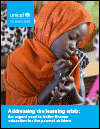
Resource | Publications,
This advocacy brief presents data and analysis on education funding from 42 countries and highlights major disparities in the distribution of public education funding. The brief notes that the lack of resources available for the poorest children is exacerbating a crippling learning crisis, as schools fail to provide quality education for their students. It calls on governments and key stakeholders to urgently address equity in education funding and presents specific actions required to achieve equitable quality education for every child.
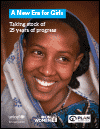
Resource | Publications,
The analysis presented in this report demonstrates that while girls' lives are better today than they were 25 years ago, the gains are uneven across all regions. The report calls on global, national and regional stakeholders to expand opportunities for girls and young women to be the changemakers and designers of the solutions to their challenges and opportunities; invest in the skills development of adolescent girls so they can compete in today's labour market; improve girls' health and nutrition; and end violence in all its forms against them.
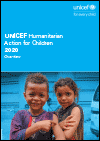
Resource | Publications,
This edition of UNICEF’s annual humanitarian funding appeal presents information about ongoing conflicts and disasters affecting millions of children and young people around the world – as well as achievements made by UNICEF and partners in response to these emergencies, and urgent humanitarian needs that remain unmet as 2020 begins. As the overview demonstrates, UNICEF continues working to reach the most vulnerable children and families with the life-saving support they need during and after emergencies. The overview also highlights efforts to strengthen the links between humanitarian action and development work, and thus to make a sustainable impact in areas affected or threatened by crises.
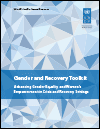
Resource | Publications,
This Toolkit on Gender Equality and Women’s Empowerment in Crisis and Recovery Settings provides guidance on how to enable the leadership of women and girls while making sure that their specific needs are met. It consists of seven thematic Guidance Notes covering UNDP’s main areas of work in crisis and recovery contexts. Each Note offers concrete entry points and proven approaches for gender-equitable, transformative recovery and resilience programming. Additional Tip Sheets complement the Notes with fast facts and overviews of policy frameworks, concepts, indicators and innovative practices.
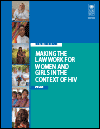
Resource | Publications,
AIDS-related illnesses are the leading cause of death among women aged 15-49. Every day, an estimated 460 adolescent girls become infected with HIV. Gender inequality continues to contribute significantly to the spread of HIV leaving women and girls more vulnerable. Gender discriminatory laws, harmful traditional practices and gender-based violence reinforce unequal power dynamics between men and women, with adolescent girls and young women being particularly disadvantaged. Laws can either support efforts to fight HIV or present barriers to women’s and girls’ ability to access HIV and health services. Laws that sanction violence against women perpetuate gender inequality and negatively affect the HIV response for women and girls. As do criminal laws on HIV non-disclosure, exposure and transmission, sexual orientation, gender identity and expression, choice of work, recreational activities and access to sexual and reproductive health services.
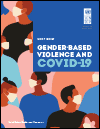
Resource | Publications,
Gender-based violence (GBV) increases during every type of emergency – whether economic crises, conflict or disease outbreaks. Pre-existing toxic social norms and gender inequalities, economic and social stress caused by the COVID-19 pandemic, coupled with restricted movement and social isolation measures, have led to an exponential increase in GBV. Many women are in ‘lockdown’ at home with their abusers while being cut off from normal support services.
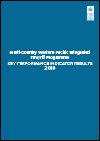
Resource | Publications,
This document provides key performance indicator results for 2019 of the Multi-Country Western Pacific Integrated HIV/TB Programme. The programme is supported by the Global Fund and aims to strengthen control of HIV and TB in 11 Pacific island countries.
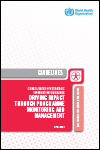
Resource | Guidelines,
In the health sector response to the HIV epidemic, collection, analysis and use of data are crucial at every level, from patient care and monitoring through programme management and national programme monitoring to global monitoring. This strategic information answers the questions: “How are patients doing?”, “How is the programme performing?” and “How can we do better?” Without these answers, the response to the HIV epidemic would be wandering in the dark.
These guidelines – an update to the World Health Organization’s 2015 publication Consolidated strategic information guidelines – present a set of essential aggregate indicators and guidance on choosing, collecting and systematically analysing strategic information to manage and monitor the national health sector response to HIV.
Specifically, for programme management, these guidelines seek to strengthen programmes’ ability to identify and close gaps in service access, coverage and quality across the HIV services cascade, from primary prevention to knowing one’s HIV status to viral suppression.
For programme monitoring, these guidelines seek to optimize and align national reporting used to assess countries’ progress toward the 2030 95–95–95 HIV Fast Track goals – 95% of HIV-positive people knowing their status; 95% of people who know their HIV-positive status on treatment; and 95% of those on treatment virally suppressed – and towards Sustainable Development Goal 3.3, which calls for ending the HIV epidemic, as indicated by reduced incidence.





